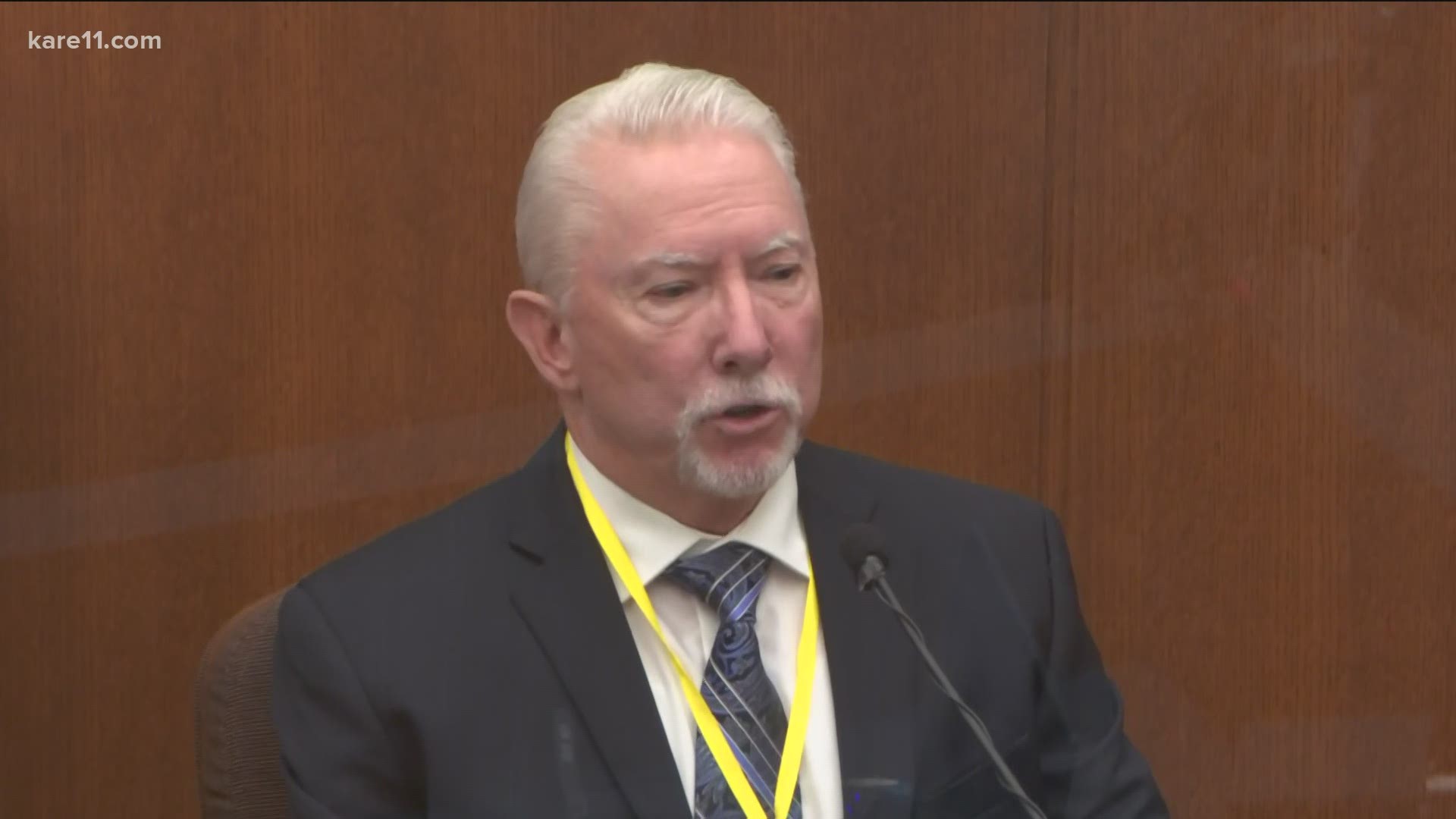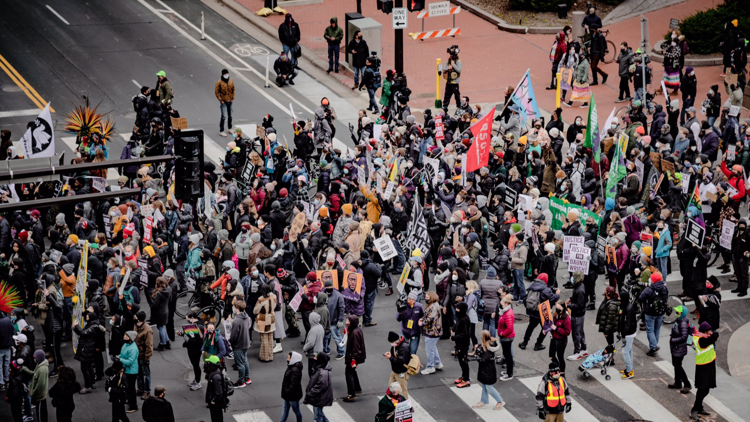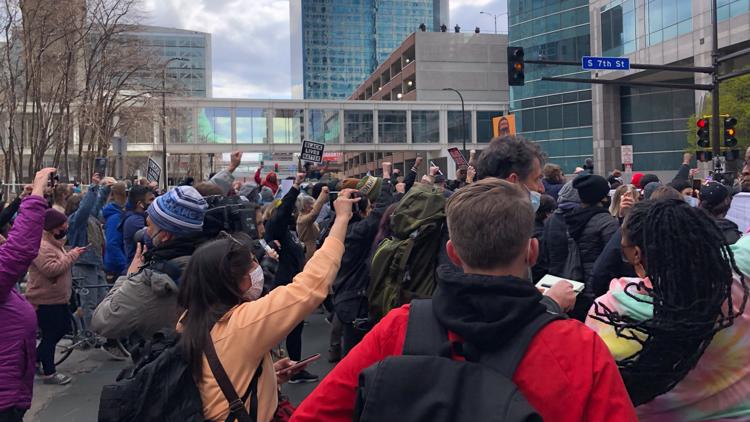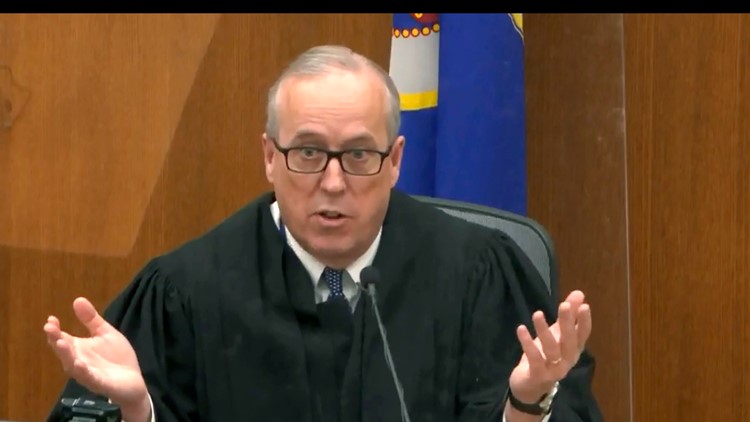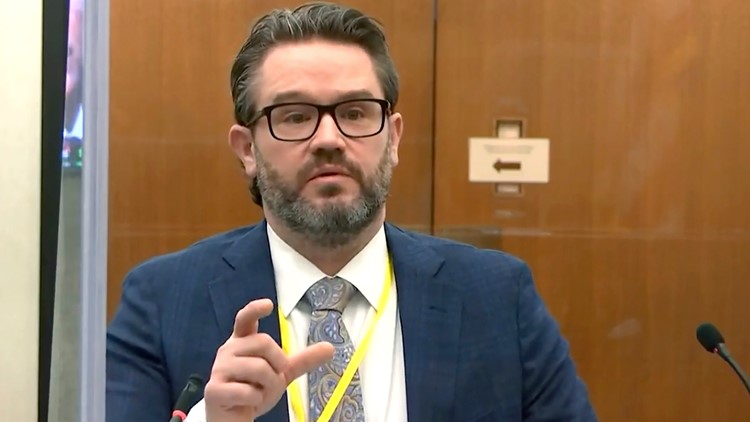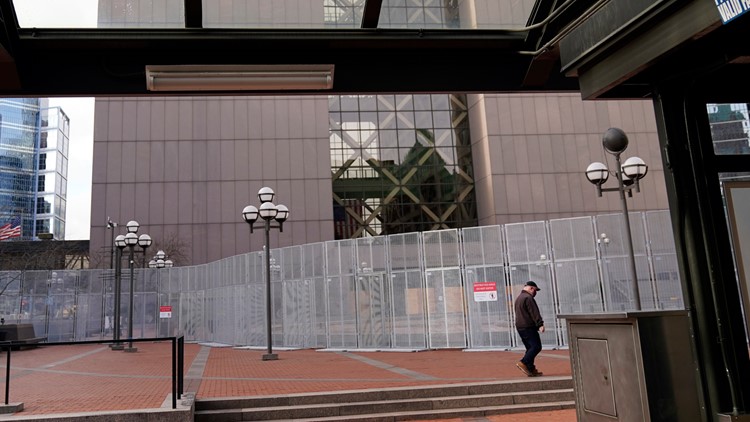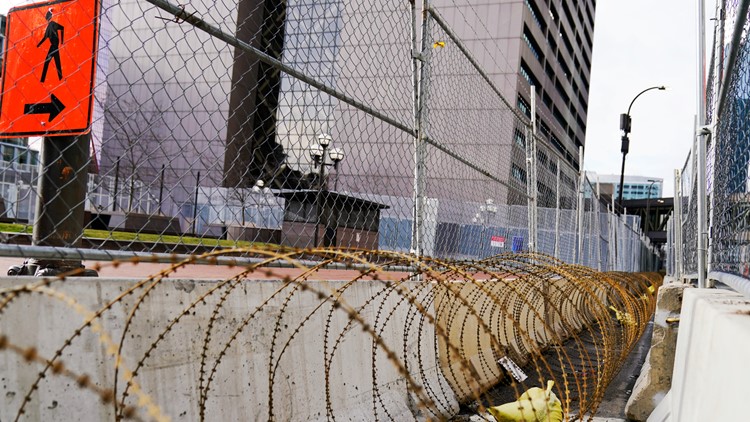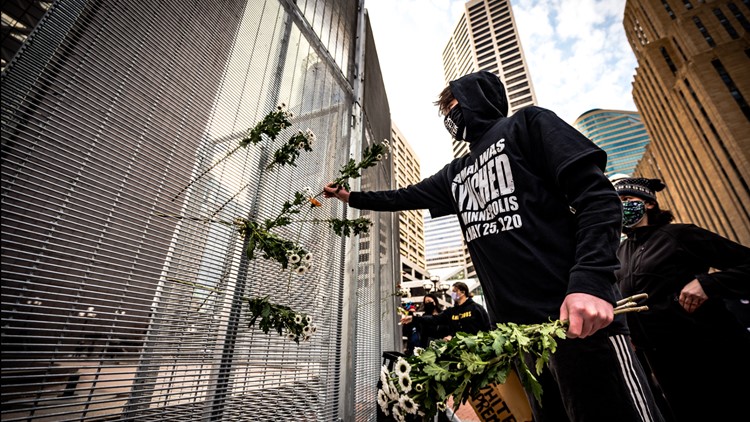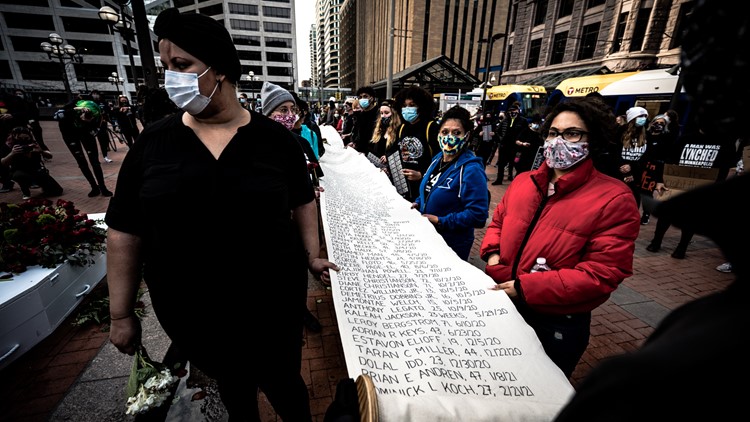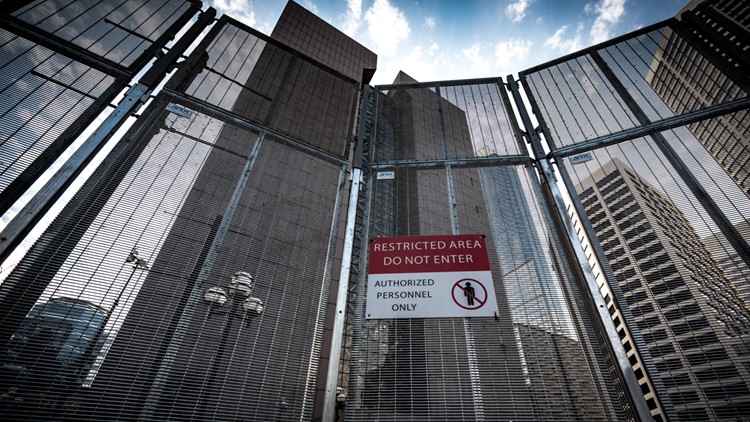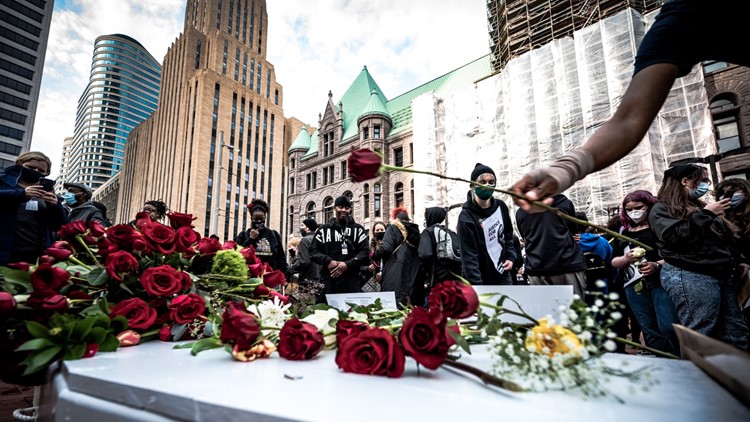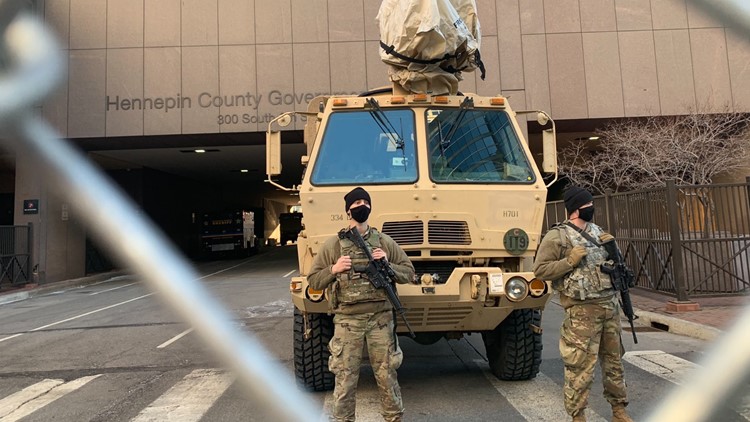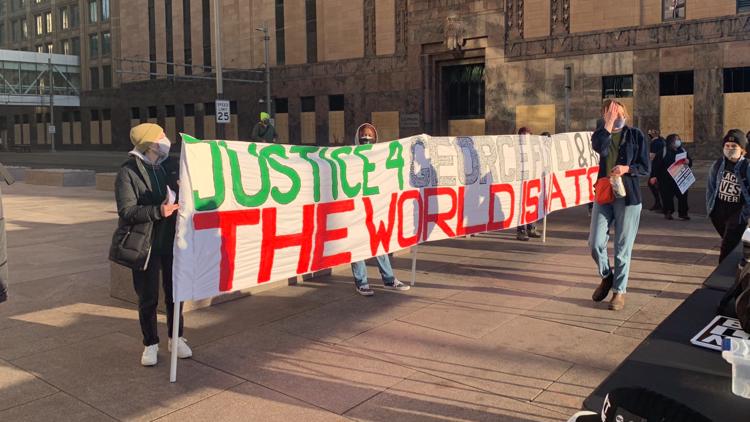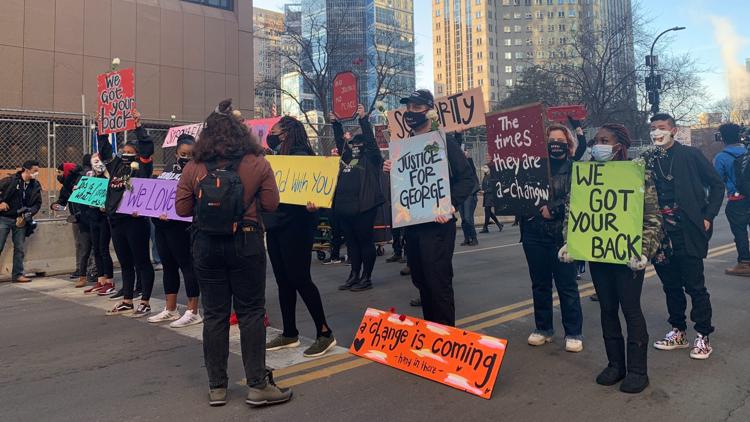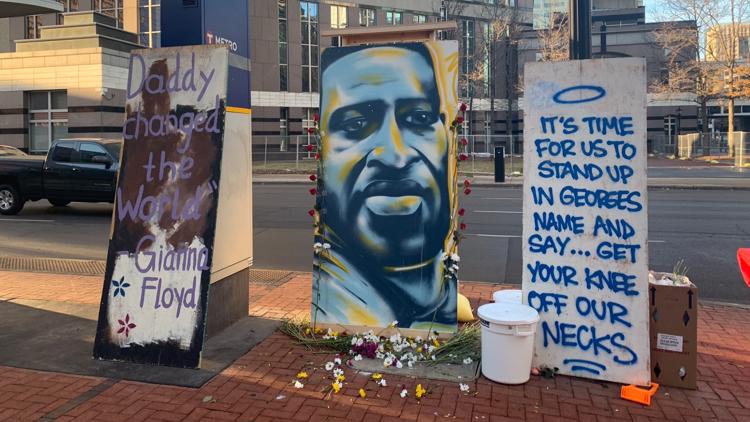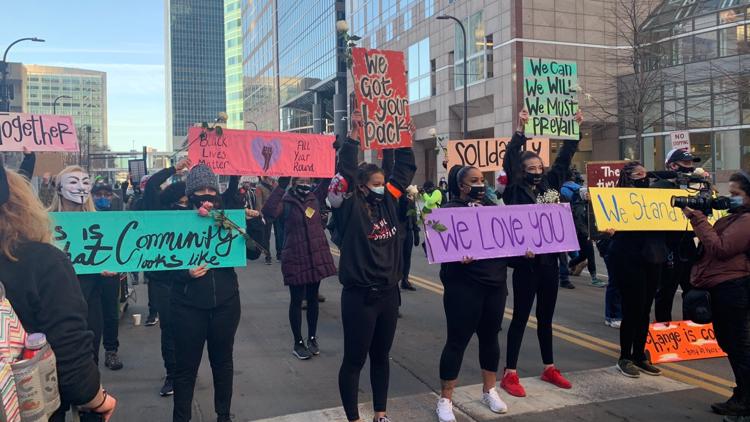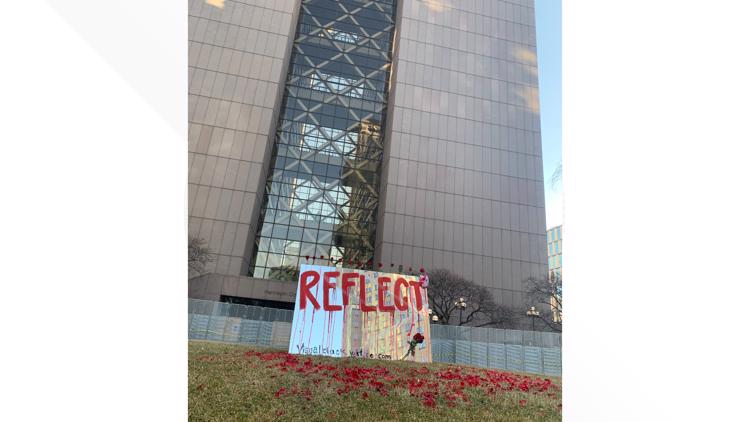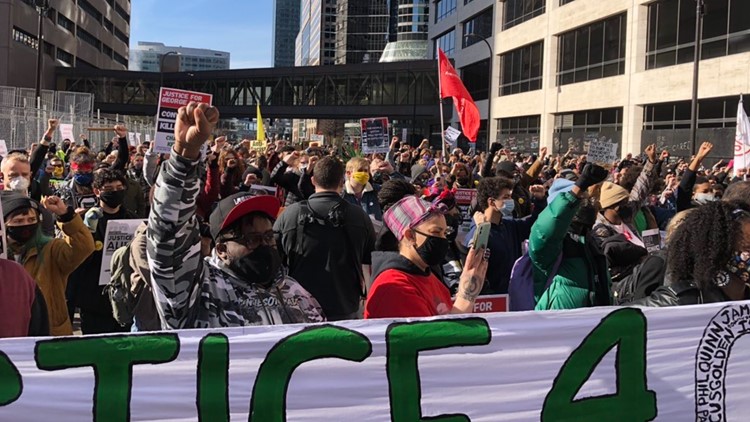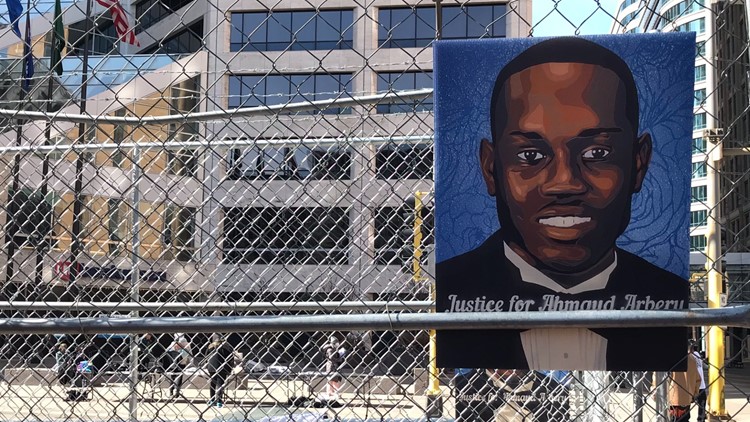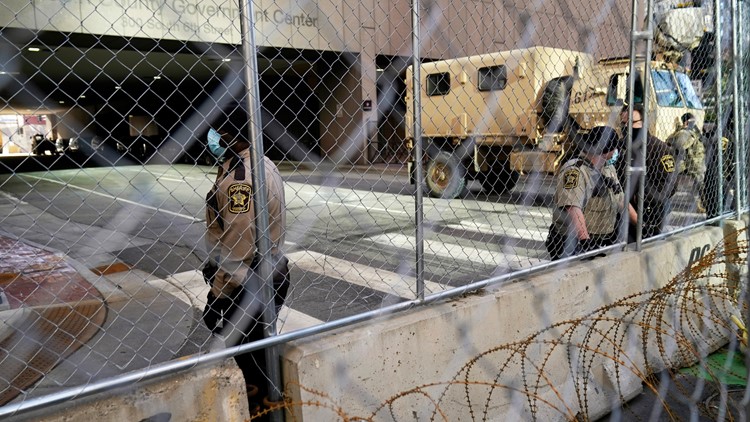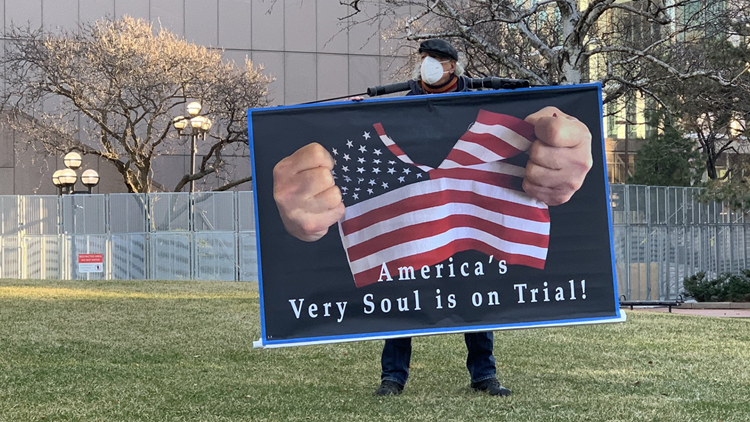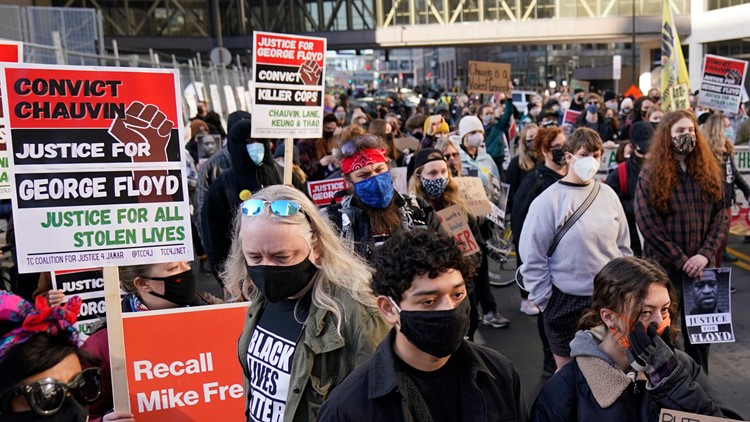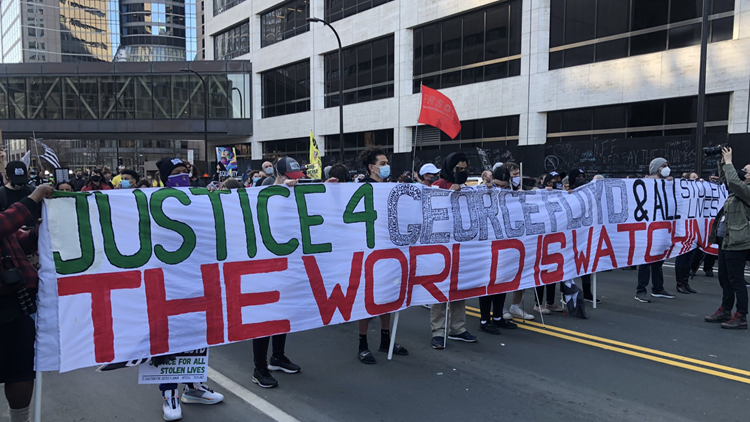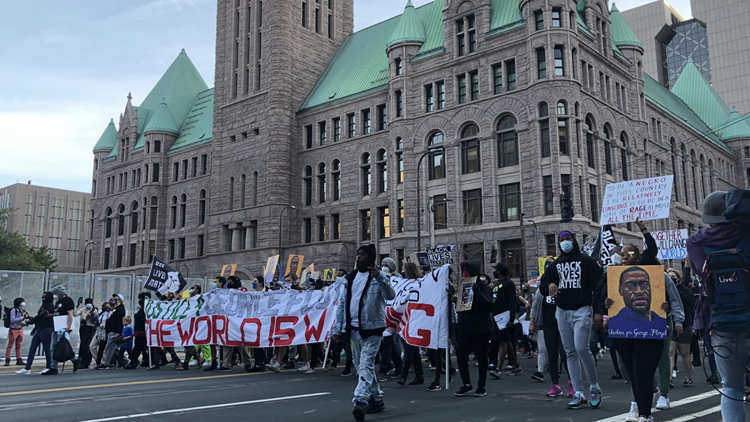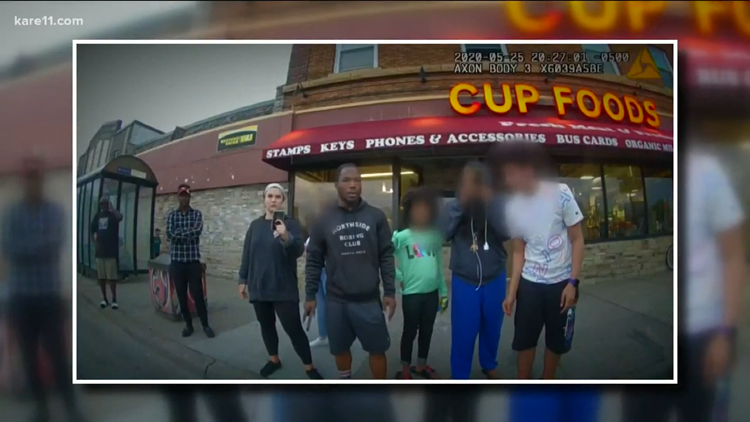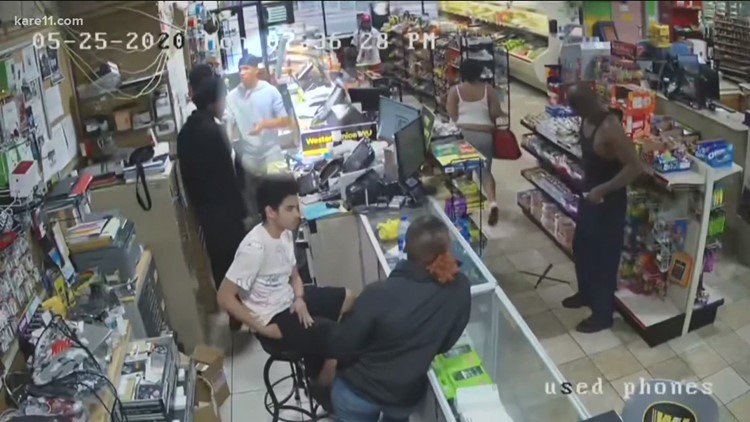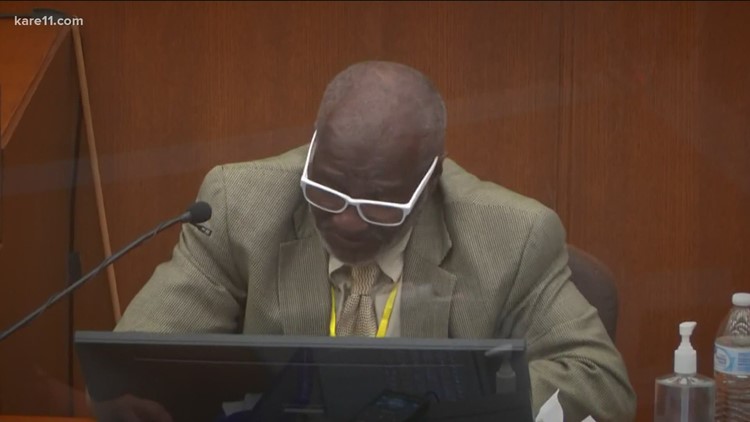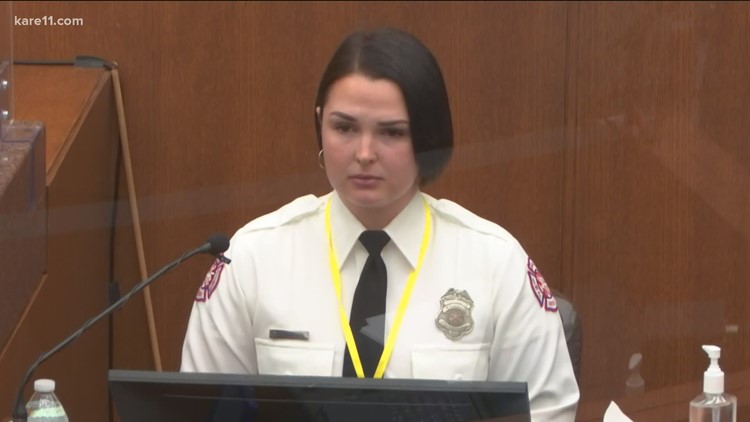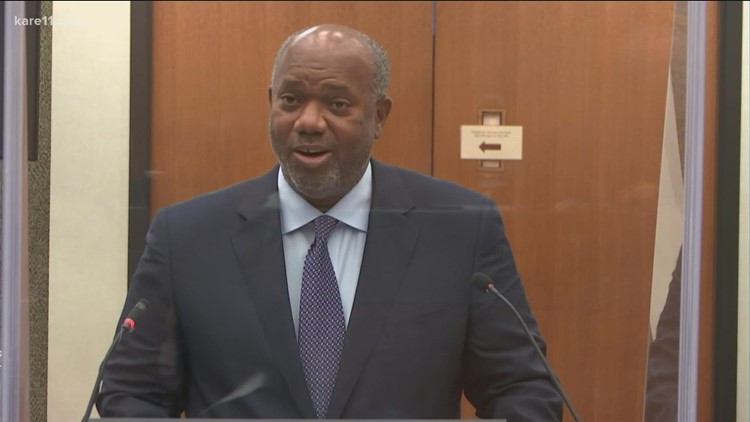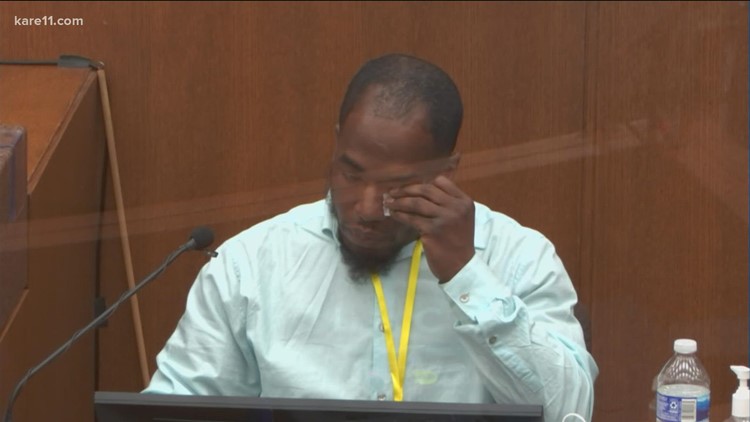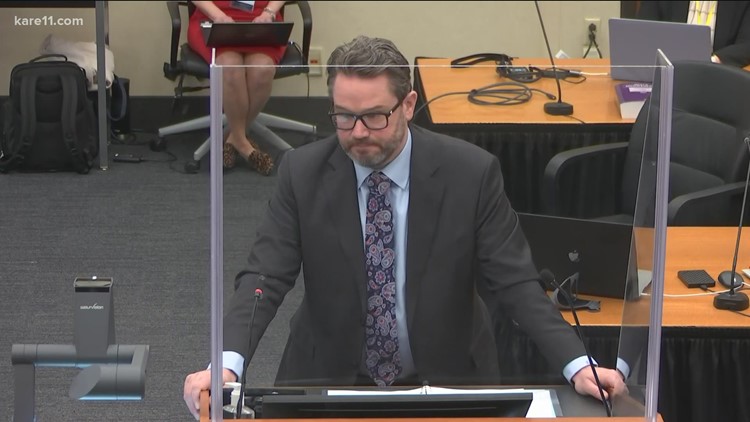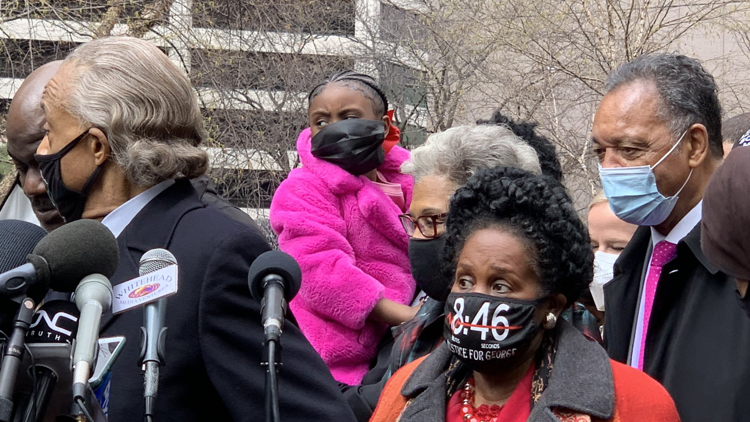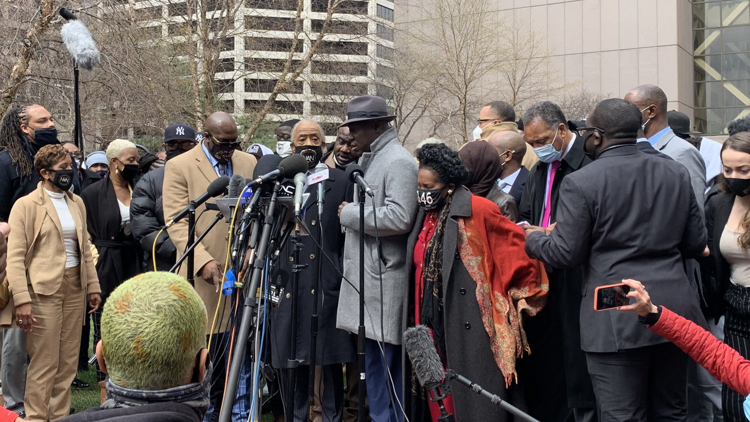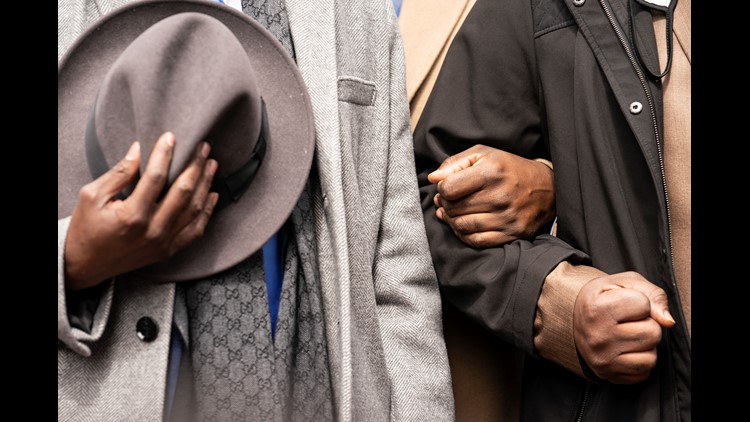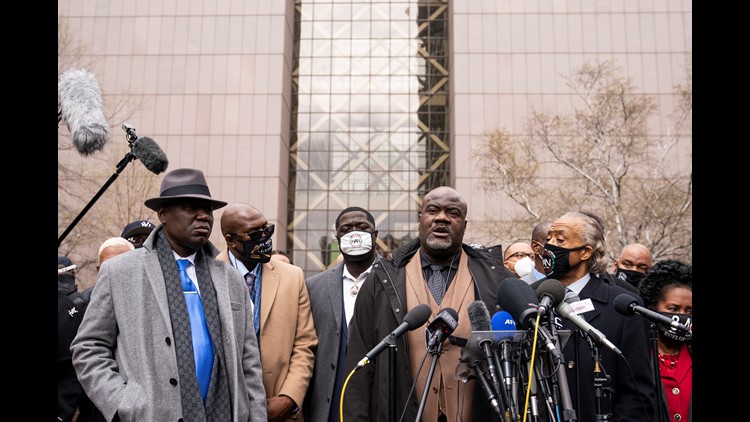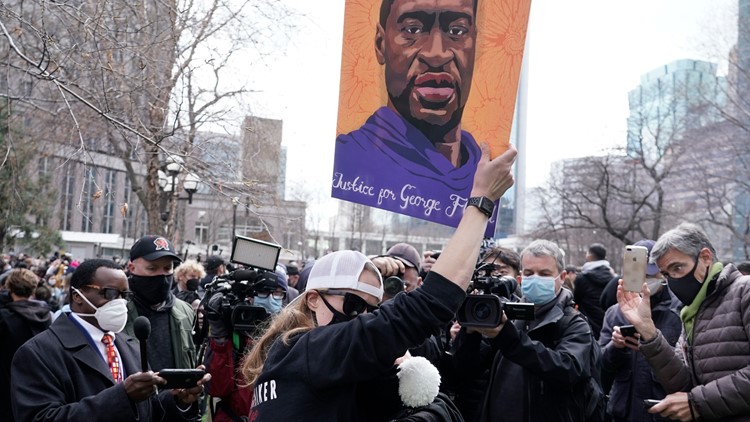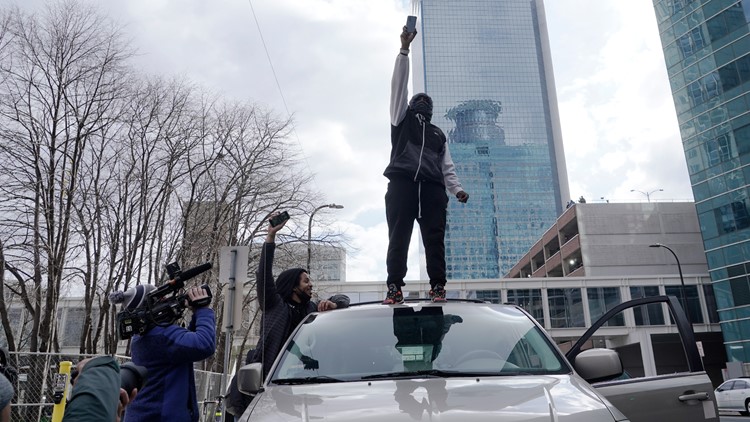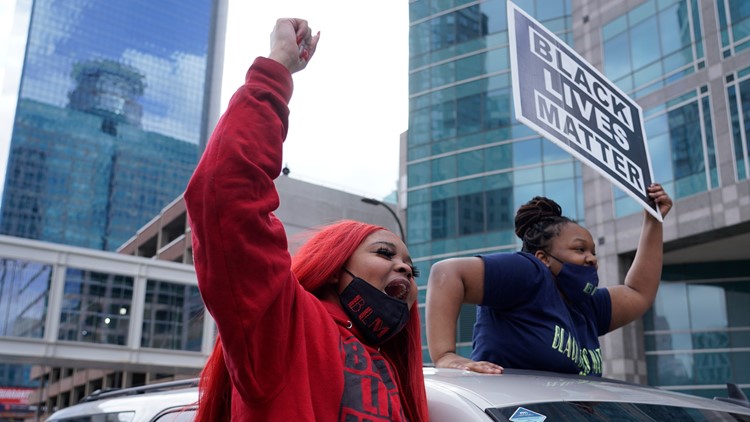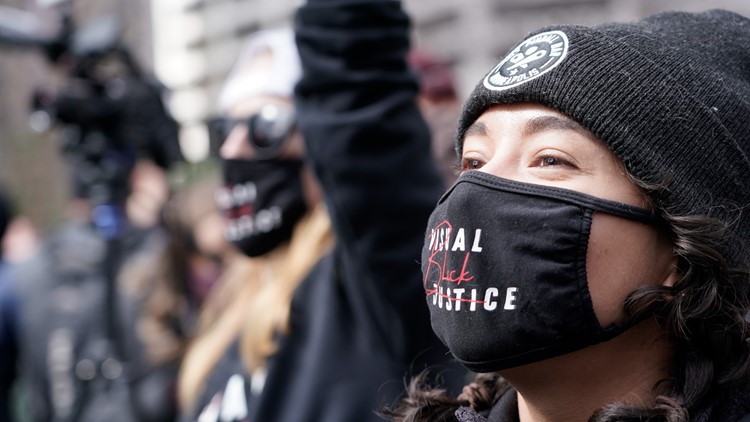MINNEAPOLIS — Editor's note: Some of the images depicted in the video and testimony are graphic. If you or someone you know have been affected by the content of recent broadcasts and are looking for mental health resources, contact the National Alliance on Mental Illness. NAMI provides guidance to those who are trying to navigate the mental health system. Please know you are not alone.
Have a question you'd like to hear our trial experts answer? Send it to lraguse@kare11.com or text it to 763-797-7215.
- Prosecution rested its case, defense began calling witnesses
- Use-of-force expert: Chauvin acted with 'objective reasonableness' in his restraint of Floyd
- Jury heard testimony, saw video of George Floyd's 2019 arrest
- Shawanda Hill, with Floyd when he was arrested on May 25, 2020, testified
- Defense showed new body camera footage from officer who said he was 'concerned' about crowd of bystanders
- Judge Peter Cahill expects closing arguments Monday, April 19
- At that point the jury will be sequestered for deliberations
- Judge denied defense request for jury to be sequestered early after Daunte Wright shooting, protests
The state rested its case against Derek Chauvin Tuesday morning, allowing the defense to begin calling witnesses in what could be the last week of testimony in the trial.
A former Minneapolis police officer, Chauvin is charged with second-degree murder, second-degree manslaughter and third-degree murder in the May 25, 2020 death of George Floyd. Bystander video and police body camera footage showed Chauvin kneeling on Floyd's neck for nine minutes and 29 seconds.
After the state rested its case, defense attorney Eric Nelson called his first witnesses: A retired Minneapolis police officer who arrested George Floyd in 2019, and the paramedic who was concerned about Floyd's blood pressure afterward. The judge told the jury they can only use the testimony as evidence of the effect opioids might have on Floyd, not as evidence about his character.
The defense also called Shawanda Hill, who was with Floyd when he was arrested on May 25, 2020 and testified that he was falling asleep in the car before officers arrived.
Next, the jury saw body camera video from another officer who responded to the scene of Floyd's arrest. That officer, Peter Chang, told the jury that the crowd was getting increasingly aggressive and he was concerned for the officers' safety.
Finally Tuesday, the defense called their own use-of-force expert: Barry Brodd, who also testified in the trial of the Chicago police officer who shot and killed 17-year-old Laquan McDonald.
Brodd testified for the entire afternoon, telling the jury, "I felt that Derek Chauvin was justified and was acting with objective reasonableness, following Minneapolis Police Department policy and current standards of law enforcement in his interactions with Mr. Floyd." He also said he believes Chauvin felt threatened by the crowd of bystanders, and he does not consider a prone restraint to be a use of force.
Upon cross-examination, Brodd acknowledged to the prosecution that if the prone restraint caused Floyd pain, it would indeed be a use of force.
In a hearing Monday morning, Judge Peter Cahill denied a request from the defense to sequester and re-question members of the jury following the fatal shooting of a Black man by a white police officer in nearby Brooklyn Center.
The jury heard from the state's last three witnesses Monday:
- An expert cardiologist who testified that George Floyd died from cardiopulmonary arrest caused by low oxygen, which was prompted by the restraint from Chauvin and two other officers
- George Floyd's brother, Philonise, who testified as a "spark of life" witness to tell the jury who Floyd was as a person
- The state's last use-of-force expert, nationally known professor and former officer Seth Stoughton. He said Chauvin's use of force was both deadly and unreasonable.
Cahill told jurors that if all testimony is complete by the end of the day Thursday, the court will take Friday off and closing arguments will begin on Monday. Cahill told jurors "pack your bag," in anticipation of sequestration and deliberations.
LIVE UPDATES
Tuesday, April 13
4:15 p.m.
Judge Peter Cahill dismissed the jury Tuesday afternoon, telling them the next witnesses are not available until Wednesday.
He then went over some legal issues around evidence with the attorneys.
2:10 p.m.
Prosecutor Steve Schleicher cross-examined Barry Brodd, the use-of-force expert called to the stand by the defense, on Tuesday afternoon. Schleicher began by asking Brodd if he would maintain that a "prone control" is not a use of force if the person being restrained felt pain.
"If the pain was inflicted through the prone control, then yes I would say that's a use of force," Brodd said.
Schleicher asked Brodd to look at a photo of Chauvin kneeling on Floyd.
"I see his knee on the upper spine and neck area," he said.
Schleicher asked Brodd if "orienting" oneself with both knees on a person who is restrained on the concrete is unlikely to produce pain. Brodd said that it "could" produce pain.
"Showed in this picture, that could be a use of force," Brodd said.
Brodd also acknowledged that "someone pressing down on you" while in the prone position could create a risk for positional asphyxia. He said he's been aware of the dangers of positional asphyxia since the late 1980s.
Schleicher asked Brodd to confirm that putting someone into a side position to alleviate that danger is "simple" and does not take much time. He agreed.
Schleicher asked Brodd to define a "threat." Brodd gave an example of a person with their hands in their pockets. "That could be a threat, that in their pocket is a gun," he said.
Brodd agreed that a risk is different from a threat, and that officers are not allowed to use force to respond to a risk.
Schleicher asked Brodd if he saw the term "one-upsmanship" in the Minneapolis Police Department use-of-force policy. He said no, but he used it to describe national law enforcement practices.
Brodd said an officer could use "control" if a person is not resisting. He again acknowledged that Chauvin's knee on Floyd "could" produce pain.
Brodd testified that although Chauvin did not get up during the nine minutes and 19 seconds he held Floyd in a prone restraint, he did sometimes appear to shift his weight to his calves.
The prosecutor showed Brodd a photo of Chauvin's toe hovering off the ground, asking if that indicates more of Chauvin's weight would be on Floyd.
"At that moment that that picture was taken, yes," Brodd said, but added that it could be in response to Floyd's body movements.
Schleicher played Brodd a clip of body camera footage in which Floyd says "my stomach hurts" and makes other claims of pain, and Chauvin replies each time, "uh huh." He also showed Brodd a video of the bystanders, and Brodd agreed that they were not a threat at that point.
"He could have been aware of their presence and maybe start to plan for it," Brodd added.
Brodd confirmed that he could hear Lane say "he's passing out" during his analysis. He also confirmed that Chauvin stayed in the same general position after Floyd stopped resisting.
1:20 p.m.
Defense attorney Eric Nelson called his own use-of-force expert to the stand Tuesday afternoon: Barry Brodd.
He said he has been involved in more than 140 cases as a use-of-force expert.
Brodd said that he reached out to the city attorney's office and offered his services for the Chauvin case. Then he was retained as an expert by Nelson.
Brodd received thousands of pages of documents but focused his review on videos, interviews and use-of-force policies.
"I felt that Derek Chauvin was justified and was acting with objective reasonableness, following Minneapolis Police Department policy and current standards of law enforcement in his interactions with Mr. Floyd," Brodd told the jury.
Brodd said he has seen officers respond to a minor infraction and end up in a "fight for their life."
Brodd testified that based on the Graham vs. Connor threshold for use of force, an officer does not have to be experiencing the imminent threat but can have a "reasonable fear" of an imminent threat.
"It's easy to sit and judge from an office on an officer's conduct," Brodd said. He said it is harder to put oneself into the officer's shoes and feel the fear they may have been feeling.
Brodd said he does his analysis by first looking at whether the officer had justification to detain the suspect. Then, how the officer responds to the suspect based on the level of resistance. The third prong is to evaluate whether the officer's use of force is "proportionate" to the level of resistance.
Brodd testified that Chauvin did not use "deadly force" in his restraint of Floyd.
Brodd told the jury about a concept he called "one-upmanship," explaining, "Police officers don't have to fight fair." He said an officer does not have to use the same exact tactic the person is using in order to gain control of them.
Nelson asked Brodd about the impact of drugs on the equation, and he said it is a significant factor. He said the person may not understand commands, may have "superhero strength" or may be able to go from "compliant to extreme noncompliance in a heartbeat."
Brodd told Nelson that "situational awareness" is important in an officer's decision making process. He listed traffic and other people watching as factors that may come into play.
"What other threats are present besides the person that we're dealing with?" he said.
Brodd said that he believed officers used justified force in putting Floyd on the ground, because he said Floyd was "actively resisting." However, he said, "I don't consider prone control as a use of force."
"That's a control technique," he said. "It doesn't hurt, you've put the suspect in a position where it's safe for you the officer, safe for them the suspect, and you're using minimal effort to keep them on the ground."
Brodd said a "target person" for positional asphyxia risk would be someone who is obese.
Nelson asked Brodd if there are situations where a reasonable police officer would not move that person to a recovery position. Brodd said in this situation, there were space limitations with Floyd against the squad car and traffic on the other side, the crowd distracted the officers, and Floyd was still "somewhat resisting." He said those could be reasons to keep him in the prone position.
Brodd testified that he believes it would be reasonable for the officers to hold a person while waiting for EMS, which he said they would expect to arrive "instantaneously."
He said the officers may be thinking, "Let's just kind of stabilize the situation and wait for the professionals to show up."
Brodd also said that keeping a person in a prone position may be safer for that person, to keep them from running with handcuffs on and injuring themselves.
Nelson asked Brodd to comment on the role of the crowd of bystanders.
"The crowd started to grow in size, started to become more vocal, so now officers are always trained to deal with, 'All right, so what threat is the biggest threat?'" he said. "I could see that Mr. Chauvin's focus started to move from Mr. Floyd to the crowd."
Brodd said Chauvin at one point pulled out his pepper spray, indicating that now "he's dealing with the bigger threat."
11:50 a.m.
The defense called a witness who has already taken the stand once for the prosecution: Minneapolis police officer Nicole Mackenzie.
Mackenzie is the Minneapolis Police Department's medical support coordinator and provides first aid training.
Nelson asked Mackenzie to confirm that new officers in the police academy receive "excited delirium training," but veteran officers typically do not. Former officer Thomas Lane, who was new to the force, would have received the training fairly recently at the time of Floyd's arrest.
Lane can be heard asking if they should be worried about "excited delirium" while restraining Floyd.
Mackenzie explained the "excited delirium" symptoms could be psychosis, agitated delirium, and superhuman strength among other things. While police are trained on excited delirium, previous witnesses testified that it is not recognized by many medical professionals and is a "controversial diagnosis."
She said they teach officers that the condition is "not a crime." If they expect excited delirium, officers are trained to call for backup and have EMS stage away from the scene, because it may not be safe to come closer.
"People that are experiencing the excited delirium syndrome, they can rapidly go into cardiac arrest," she said.
10:40 a.m.
Defense attorney Eric Nelson called Minneapolis park police officer Peter Chang as the fourth witness of the day Tuesday.
Chang was one of the other officers who responded to the scene of Floyd's arrest on May 25, 2020. He told the defense that he was concerned about the crowd of bystanders getting "louder and aggressive" and said they were "very aggressive" toward officers.
"I was concerned for the officers' safety at that point," he said.
Nelson showed the jury about three minutes of Chang's body camera footage from the scene, which the judge had previously ruled could be admitted.
The video shows Chang talking with Shawanda Hill and Morries Hall, who were in the car with Floyd when he was arrested.
On cross-examination prosecutor Matthew Frank asked Chang about a comment he made to former officer Tou Thao, asking him, "Still red?" Chang confirmed that he was wondering if Thao's body camera was still on.
10:30 a.m.
The defense called Shawanda Hill to the stand Tuesday, a woman who was with George Floyd when he was arrested on May 25, 2020.
Hill described Floyd's behavior inside Cup Foods, where she ran into him, as "happy, normal, talking, alert." She said Floyd then offered her a ride to her house.
She said Floyd fell asleep in the car, and he would wake up and make "a little gesture" and then nod back off. He said Floyd had told her in the store that he was tired.
Hill confirmed that Floyd was roused by the police when they approached the car to arrest him.
On cross-examination she told the prosecution that Floyd was happy and "did a little dance" on the way to the car.
She told prosecutor Matthew Frank that Floyd seemed "very" surprised when an officer pulled a gun on him.
9:55 a.m.
The defense called retired paramedic Michelle Moseng to the stand Tuesday morning, the second in a series of witnesses called to testify about a 2019 arrest of George Floyd.
Moseng said Floyd told her in 2019 that he had been taking multiple narcotics "like every 20 minutes" but she could not remember if it was "oxy or percocet."
She told Nelson that Floyd had taken another opioid as the officers approached.
Moseng took Floyd's vitals after his arrest, and then he was brought to the hospital. Moseng testified that she was concerned about Floyd's high blood pressure at the time.
9:40 a.m.
Defense attorney Eric Nelson began presenting his case Tuesday by bringing up a 2019 arrest of George Floyd. He called retired Minneapolis police officer Scott Creighton as his first witness.
Judge Peter Cahill told the jury that Creighton's testimony is being used for the sole purpose of showing what potential effect opioids could have on Floyd, and is not to be taken as evidence about his character.
Creighton testified that he approached a vehicle and asked Floyd to put up his hands, but Floyd kept turning toward the driver and would not show his hands, so Creighton pulled his gun.
Nelson played the jury video from Creighton's body camera, showing him attempting to get Floyd to get out of his car. Floyd can be heard saying "don't shoot me."
Another officer says, "Open your mouth, spit out what you've got."
Prosecutor Erin Eldridge cross-examined Creighton, confirming that he had his gun drawn when he approached Floyd. She asked if Floyd followed his instructions to remove his seat belt, and he said yes.
Floyd put his hands in the air, and then Creighton ordered Floyd to put his hands on the dash. Creighton confirmed that he forcibly put Floyd's hands on the dash.
Eldridge asked Creighton if an officer had threatened to use a Taser on Floyd and officers had begun yelling.
"It escalated real quick," Creighton agreed.
Creighton also confirmed that Floyd was able to communicate, walk, and ask officers not to beat him up.
9 a.m.
The state objected to admission of part of a body-worn camera video the defense plans to present to the jury. The camera is from another officer who arrived at the scene after Floyd's arrest. Prosecutor Matthew Frank said part of the footage is "full of hearsay."
Defense attorney Eric Nelson said the video shows the crowd of bystanders getting more heated after Floyd is taken away by ambulance, and that it is "highly relevant."
The judge told the defense to fast forward through part of the video during trial, and redact it before it's sent to the jury as evidence.
Monday, April 12
Monday, jurors heard testimony from Dr. Jonathan Rich, a cardiologist at Northwestern Memorial Hospital and an associate professor at Northwestern University. As part of his work, he looks at all the deaths and near deaths in the cardiac care unit at Northwestern to determine what could have been done differently.
"I can state with a high degree of medical certainty that George Floyd did not die from a primary cardiac event, and he did not die from a drug overdose," he testified.
In the afternoon the prosecution called George Floyd's brother to the stand as a "spark of life" witness. Minnesota allows this kind of testimony from people who knew the victim in real life, even though they were not present on the day in question.
Philonise Floyd talked about George as a leader of their family, the one who made sure his brothers and sisters got to school on time and had a snack for the day. Floyd also talked about his brother's relationship with their late mother.
"It was one of a kind," Philonise said. "He showed us how to treat our mom and how to respect our mom. He just, he loved her so dearly."
The final witness to take the stand on Monday was Seth Stoughton, a use-of-force expert.
Stoughton said there are two elements to Derek Chauvin's use of force: First, the knee on George Floyd's neck and second, the prone restraint itself.
He said a "reasonable officer" would have realized that Floyd was already in handcuffs, and that there were four officers on the scene. He said it was not "necessary" to put Floyd in the prone position at that point.
Stoughton also testified that a reasonable officer would have known the risk factors of the prone position, and of a knee on someone's neck while they were in that position.
"Someone without a pulse does not present a threat in any way," Stoughton said.
RELATED: Chauvin attorney asks for jury sequestration in wake of Daunte Wright shooting, Judge Cahill denies

